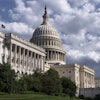
Families purchased more school lunches and breakfasts the year after the federal government toughened nutritional standards for school meals. A new University of California, Davis, study suggests that families turned to school lunches after the Obama administration initiative was in effect to save time and money and take advantage of more nutritious options.
Researchers looked at the purchasing habits of nearly 8,000 U.S. households over two years — one year before and after the change in standards. The results have important implications for policymakers and researchers, but also food manufacturers and retailers, researchers said.
The study, “Groceries or School Cafeterias: How Households Respond to Nutrition Mandates,” was published in September in the Journal of Marketing Research.
“We find that the Healthy, Hunger-Free Kids Act attracted even greater participation from households for whom the preexisting benefits of school meals (time and money savings) were already important and were now coupled with an additional benefit: healthier food for their kids,” said Mike Palazzolo, lead author of the study and assistant professor of marketing at the UC Davis Graduate School of Management. “It had a stronger pull among households with limited time and money, and whose pre-policy grocery food purchases were both smaller and less healthy.”
The U.S. Department of Agriculture program was a centerpiece of then-First Lady Michelle Obama’s “Let’s Move!” initiative to combat childhood obesity. It was signed into law in 2010, and schools nationwide were required to implement it by 2014. New standards called for milk to be fat-free or 1% fat, that more fruit and vegetables be served, and that unhealthy components such as sodium, sugar and saturated fat be capped. Portion sizes were also reduced.
The changes significantly improved the nutritional content of school-served breakfasts and lunches, according to the USDA Healthy Eating Index.
Opponents of the policies had predicted sales and participation in meal programs would decline. Even proponents predicted the participation would remain the same, not increase.
Retailers affected
Both retailers and manufacturers were affected by the nutrition mandates, researchers said, with a 4.4% reduction in spending among households with kids — translating to a 1.4% revenue loss for grocery retailers, researchers found. Researchers found the decrease was attributable to items likely to be purchased for children and categories traditionally associated with breakfast and lunch — the meals served at school.
Grocery stores may need to revamp their lunch offerings to bring back lost sales, researchers said. “Relatedly, the school meal program is itself a large revenue source for manufacturers whose products fit (the standards),” with some brands reformulating their grocery store products to fits the needs of school lunch purchases at stores, the paper states.
“Our findings add to a valuable knowledge base that marketers and nutrition policy advocates can utilize in efforts to encourage households to adopt healthier diets,” Palazzolo said.






















